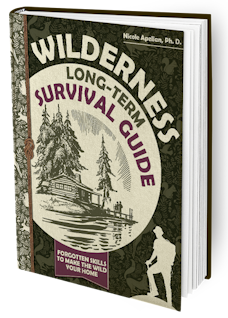Ingenious Ways to Purify Water in the Wild
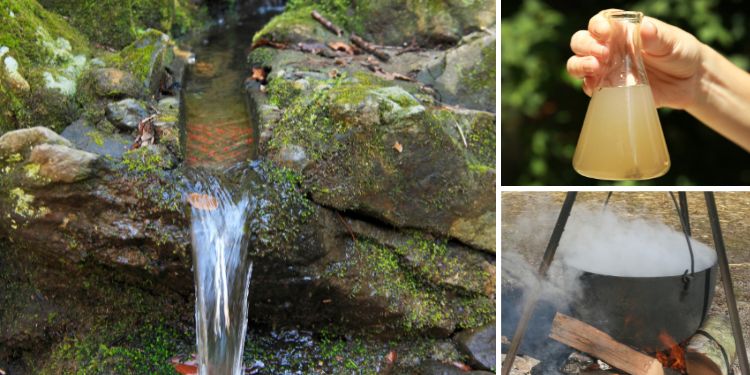 by Rich M.
by Rich M.
It is rare to find water in the wild which is safe to drink. Naturally occurring water will either be muddy, contain floating debris (including small debris), or have microscopic pathogens in it. Long gone is the day when we could safely drink water from a clear running stream or spring.
In a survival situation, we have to assume that any water we find is unsafe to drink, no matter how clean and clear it might look (assuming you can actually find clear water). Even water that tastes good might not be safe to drink.
That’s why its best to carry some sort of water filter with you, whenever you are in the wild. Most people use a straw-type water filter, such as the Lifestraw for day trips, survival kits and bug out bags.
For a longer period of time, such as a camping trip, you’ll need something that will handle a larger amount of water, such as one of the bag-type filter systems, which take water from one bag, through a filter and into another bag. Lifestraw makes an excellent one of these and so does Sawyer.
But what if you find yourself in the wild, without any of those water filters? You have to make sure that your water is safe to drink, otherwise there’s a chance of getting dysentery, which can kill.
⇒ 10 Medical Supplies You Need to Stockpile Before It’s too Late
Actually, we need to concern ourselves with both filtration and purification. While often used interchangeably, those two words don’t mean the same thing. Filtration removes any suspended sediment in the water, such as dirt, sand or organic matter.
Purification kills or removes microscopic pathogens. Of the two, the microscopic pathogens are the more dangerous, but the sediment will affect the taste of the water and how appetizing it is to drink. I don’t know about you, but I’m not a real fan of drinking muddy water.
For the sake of making water safe to drink, we may have to use both filtration and purification methods. Some filters, like the ones I mentioned above, filter water so well, that they also manage to purify it, removing the microscopic pathogens. But unless you have a water filter that advertises that it removes 99.99% of bacteria, I wouldn’t count it to purify your water.
Water Filtration in the Wild
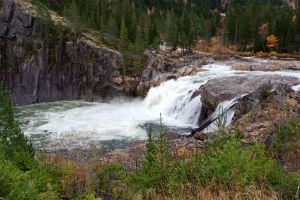 Assuming that you don’t have one of the water filtration systems mentioned above, you’re going to have to use what nature provides to filter your water.
Assuming that you don’t have one of the water filtration systems mentioned above, you’re going to have to use what nature provides to filter your water.
While these methods may not filter the water as well as the filters mentioned above, they will make it drinkable.
You can learn more about water filtration in the wild in this guide. Here you will also find out four more water filtration and purification methods, along with essential knowledge on crafting various types of fire for survival, constructing wilderness shelters, and other invaluable information for surviving long-term in the wild during a crisis.
One thing to keep in mind with any filter, is that the more sediment that is in the water, the faster the filter will clog. This means either replacing the filter or cleaning the filter medium. For the methods we’re going to talk about, cleaning is a real possibility, especially if you have a plentiful water source, like a stream to use.
Let it Sit
The simplest means of removing sediment from water is to just let the water sit. Napoleon Bonaparte is quoted as saying, “Dirty water, left sitting overnight, becomes clean.”
Most of the sediment that is found in water will settle out of the water, if the water is placed in a container and allowed to sit overnight, as the sediment is generally heavier than the water. Carefully scooping out anything floating on the surface and then pouring off the water, after the sediment settles, will provide water that is relatively clear.
Sand and/or Charcoal
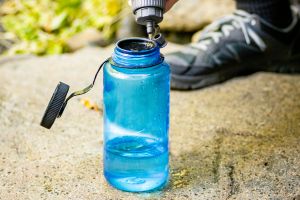 The “Bio-filter” is a common technique used in survival and third-world countries.
The “Bio-filter” is a common technique used in survival and third-world countries.
It consists of a three-layer filter, using gravel, sand and finally activated charcoal. Each of the three filter mediums removes progressively smaller sediment, to the point of the activated charcoal, which will remove almost all of the bacteria.
Some people add additional layers of sand and gravel, after the activated charcoal, but they are not necessary, unless it is to keep the activated charcoal from coming out of the filter.
The problem with this, from a survival point of view, is that it is extremely difficult to make activated charcoal in the wild, as that requires chemicals that we are unlikely to have with us. However, sand and/or crushed charcoal will work to remove most almost all sediment and improve the taste of the water, by removing impurities. It just won’t remove the microscopic pathogens.
Cloth
Cloth, especially any tightly-woven cloth, works well to filter sediment out of water. If the cloth doesn’t seem to be doing well enough, simply double the cloth over, so that the water has to pass through several layers. Each layer will capture and remove more sediment.
Moss
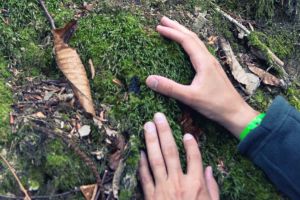 Another naturally occurring material for making filters is moss, assuming you’re in an area where it can be found.
Another naturally occurring material for making filters is moss, assuming you’re in an area where it can be found.
Both live and dry moss can be used equally well.
The dry moss will swell as it absorbs water, making for finer filtration.
In order to do this, you’ll need a discarded soda bottle; something that’s usually easy to find. Cut off the bottom of the soda bottle to make a funnel. Then flip the funnel narrow side down and pack the funnel as full as you can with moss. Once the moss swells from the water, it will filter slowly; but will be quite effective.
This sort of filter doesn’t lend itself to reusing the filter medium, as the moss tends to break up when you try and clean it. So, you’ll need to be sure that you keep looking for more moss to refresh your filter with, as needed.
Purifying Water in the Wild
Since filtering water doesn’t guarantee that it will be safe to drink, we can’t really talk about filtration, without talking about purification as well. The most common methods of purifying water are a combination of filtration and chemical treatment.
But if you don’t happen to have chlorine or iodine with you, the chemical treatment is out of question. That leaves us to other methods. Please note that you’ll want to use these methods after you’ve already removed the sediment with a filter.
Boiling
Perhaps the oldest and most widely known method of water purification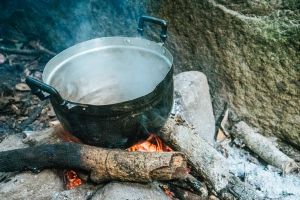 is the use of heat. Pretty much everyone knows that you can purify water by boiling it. But few people know that you don’t really have to get the water hot enough to boil, to have the same effect.
is the use of heat. Pretty much everyone knows that you can purify water by boiling it. But few people know that you don’t really have to get the water hot enough to boil, to have the same effect.
Water boils at a temperature of 212°F, but the water only has to reach 158°F to kill bacteria, protozoa and viruses. Raising water (or any other liquid) to this temperature to purify it is known as “pasteurization.” The use of pasteurization, rather than boiling, saves on fuel, which could be critical in some survival situations.
Some sort of heat-resistant container is needed to boil or pasteurize water. In addition, a means of measuring the water’s temperature is needed for pasteurization.
This can be a thermometer or a WAPI (water pasteurization indicator), which is ideal for putting in a survival kit or bug out bag.
The WAPI consists of a plastic capsule with a wax pellet inside. The wax is formulated to melt at 160°F, indicating that the water is hot enough to be pasteurized. Once the WAPI is removed from the hot water and allowed to cool, the wax solidifies, allowing the WAPI to be used again.
Distillation
When we boil water, some portion of that water coverts to water vapor or steam, evaporating. That water vapor can be captured and allowed to cool, condensing back to water. When that happens, you get extremely pure water, as everything but the water gets left behind.
The idea is to make what is commonly referred to as a “solar still.” This consists of a piece of plastic sheeting, suspended over a hole which contains the water source.
A small stone is placed on the sheeting, creating a dip point for the distilled water to drip off of and into another container. The better the plastic sheeting is sealed to the ground, the more efficiently the system will work.
Ultraviolet Light
 A much simpler way of purifying water is to use ultraviolet light (UV light). This is common in those roadside water places, where you can fill your own containers with purified water. They use UV light because it will kill viruses, whereas viruses are so small, that it is difficult to remove them with filtration. UV light also kills bacteria and protozoa.
A much simpler way of purifying water is to use ultraviolet light (UV light). This is common in those roadside water places, where you can fill your own containers with purified water. They use UV light because it will kill viruses, whereas viruses are so small, that it is difficult to remove them with filtration. UV light also kills bacteria and protozoa.
We have an abundant source of UV light hanging over our heads every day, in the sun. As long as we have good sunlight, we have sufficient UV to purify water.
All we have to do is pour the water into a shallow container and set it in the sunlight, ensuring that there is no shadow. UV will kill microscopic pathogens in 10 seconds; but just to be sure, leave it for a couple of minutes.
Alcohol
Besides heat, alcohol is probably the oldest means of water purification. Wine was added to the local water in many ancient cultures, in order to make it safe to drink. The alcohol naturally kills the bacteria, making the water safe to drink. This is the root of why we find people in some countries consuming wine with every meal.
The amount of wine required for water purification is something widely disputed. Home’s Odyssey states one part of water to 20 parts of wine, giving us some insight into the ancient Greek and Roman cultures.
However, the ancient Jewish culture, amongst others, used one part wine to four parts water. If stronger alcoholic beverages are used, the amount of alcohol can be cut.
Wine is typically 12% alcohol, where as hard liquor is typically 40% alcohol, so a bit less than 1/3 would be needed. Please note that this has to be drinking alcohol, not rubbing alcohol.
In the wild, it’s hard to find safe water to drink. Even clear-looking water might be dangerous. It’s best to have a water filter with you. If you don’t, you can try simple methods to filter it. But it’s important to purify the water too. Knowing these methods can save your life in the wild.
Wilderness Long-Term Survival Guide is the first handbook ever that helps people NOT just to survive in the wild, BUT to LIVE there! You can use it to turn the Wild into your second home and become self-reliant in nature long term. With this guide, you can make your own piece of paradise far from the hustle and bustle of modern living. This is the book you should have with you at all times, in your bag, in your car, in your house. You can get your copy HERE!
Anyone can join.
Anyone can contribute.
Anyone can become informed about their world.
"United We Stand" Click Here To Create Your Personal Citizen Journalist Account Today, Be Sure To Invite Your Friends.
Before It’s News® is a community of individuals who report on what’s going on around them, from all around the world. Anyone can join. Anyone can contribute. Anyone can become informed about their world. "United We Stand" Click Here To Create Your Personal Citizen Journalist Account Today, Be Sure To Invite Your Friends.
LION'S MANE PRODUCT
Try Our Lion’s Mane WHOLE MIND Nootropic Blend 60 Capsules
Mushrooms are having a moment. One fabulous fungus in particular, lion’s mane, may help improve memory, depression and anxiety symptoms. They are also an excellent source of nutrients that show promise as a therapy for dementia, and other neurodegenerative diseases. If you’re living with anxiety or depression, you may be curious about all the therapy options out there — including the natural ones.Our Lion’s Mane WHOLE MIND Nootropic Blend has been formulated to utilize the potency of Lion’s mane but also include the benefits of four other Highly Beneficial Mushrooms. Synergistically, they work together to Build your health through improving cognitive function and immunity regardless of your age. Our Nootropic not only improves your Cognitive Function and Activates your Immune System, but it benefits growth of Essential Gut Flora, further enhancing your Vitality.
Our Formula includes: Lion’s Mane Mushrooms which Increase Brain Power through nerve growth, lessen anxiety, reduce depression, and improve concentration. Its an excellent adaptogen, promotes sleep and improves immunity. Shiitake Mushrooms which Fight cancer cells and infectious disease, boost the immune system, promotes brain function, and serves as a source of B vitamins. Maitake Mushrooms which regulate blood sugar levels of diabetics, reduce hypertension and boosts the immune system. Reishi Mushrooms which Fight inflammation, liver disease, fatigue, tumor growth and cancer. They Improve skin disorders and soothes digestive problems, stomach ulcers and leaky gut syndrome. Chaga Mushrooms which have anti-aging effects, boost immune function, improve stamina and athletic performance, even act as a natural aphrodisiac, fighting diabetes and improving liver function. Try Our Lion’s Mane WHOLE MIND Nootropic Blend 60 Capsules Today. Be 100% Satisfied or Receive a Full Money Back Guarantee. Order Yours Today by Following This Link.




